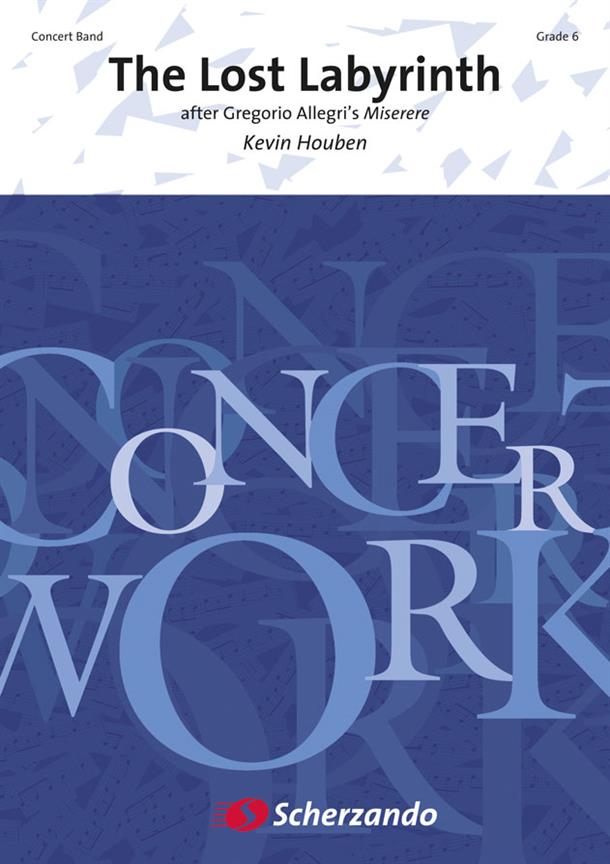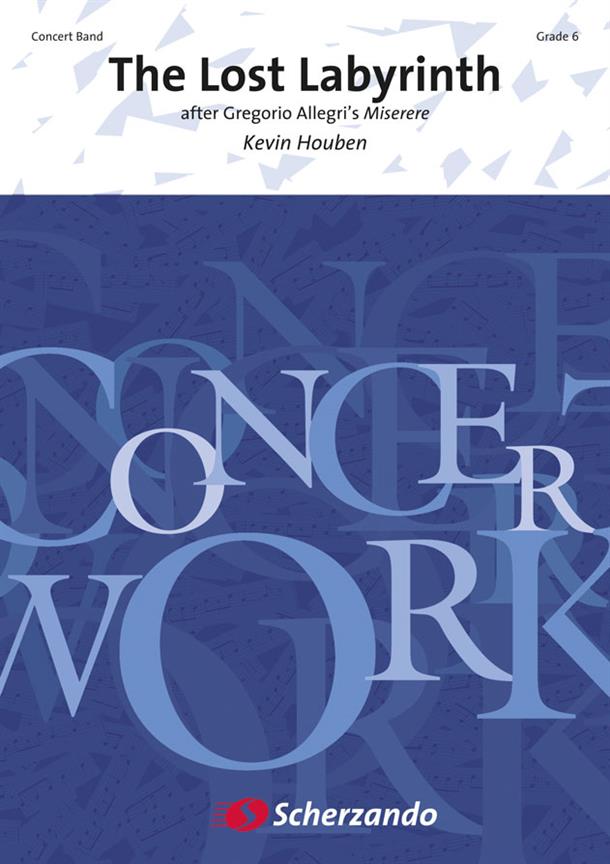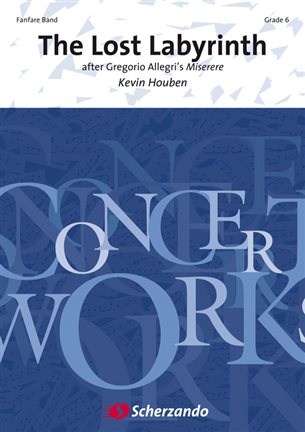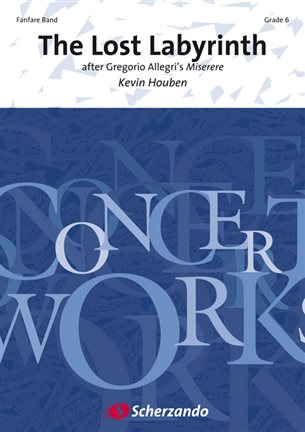Gregorio Allegri (1582 - 1652)
 Italie
Italie
 Italie
ItalieGregorio Allegri (1582 ? 7 February 1652) was an Italian composer and priest of the Roman School of composers. He mainly lived in Rome, and died there. He studied music under Giovanni Maria Nanini, the intimate friend of Palestrina. Being intended for the Church, he obtained a benefice in the cathedral of Fermo. Here he composed a large number of motets and other sacred music, which, being brought to the notice of Pope Urban VIII, obtained for him an appointment in the choir of the Sistine Chape ... (Read all)
Source : Wikipedia
Source : Wikipedia
FREE SHEET MUSIC
Miserere Mei, Deus - Organ transcription for Church Service (from Psalm 51)
Gregorio Allegri
Organ solo / 1 PDF / 1 MP3
MISERERE (Variations sur le Miserere d'ALLEGRI)
Gregorio Allegri
String and Wind Ensemble / 9 PDF / 3 MP3 / MIDI
"Miserere Mei, Deus" for Woodwind Quintet
Gregorio Allegri
Woodwind Quintet: Flute, Clarinet, Oboe, French Horn and Bassoon / 1 PDF / 1 MP3
Search
1 9 17 25 33 More results ⇒ 39


 Miserere Mei Deus - Gregorio Allegri - Brass Quintet
Miserere Mei Deus - Gregorio Allegri - Brass Quintet
$9.99 #Brass Quintet: 2 trumpets, horn, trombone, tuba #Gregorio Allegri #Tim Brehaut #Tim Brehaut


 Miserere Mei Deus by Gregorio Allegri - BRASS QUINTET
Miserere Mei Deus by Gregorio Allegri - BRASS QUINTET
$2.99 #Gregorio Allegri #Matt Smith #Matt Smith
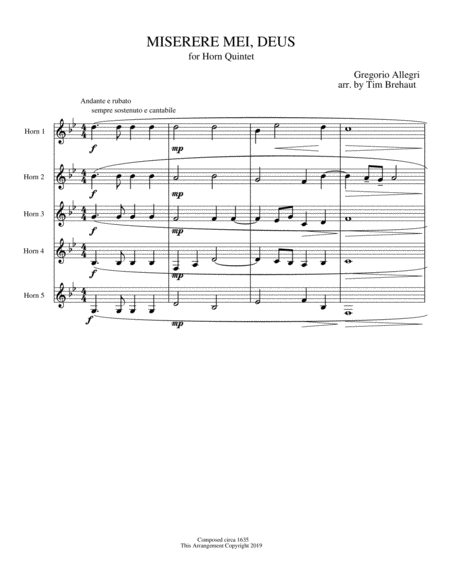

 Miserere Mei, Deus - Gregorio Allegri - Horn Quintet
Miserere Mei, Deus - Gregorio Allegri - Horn Quintet
$8.99 #Brass Quintet: 2 trumpets, horn, trombone, tuba #Gregorio Allegri #Tim Brehaut #Tim Brehaut
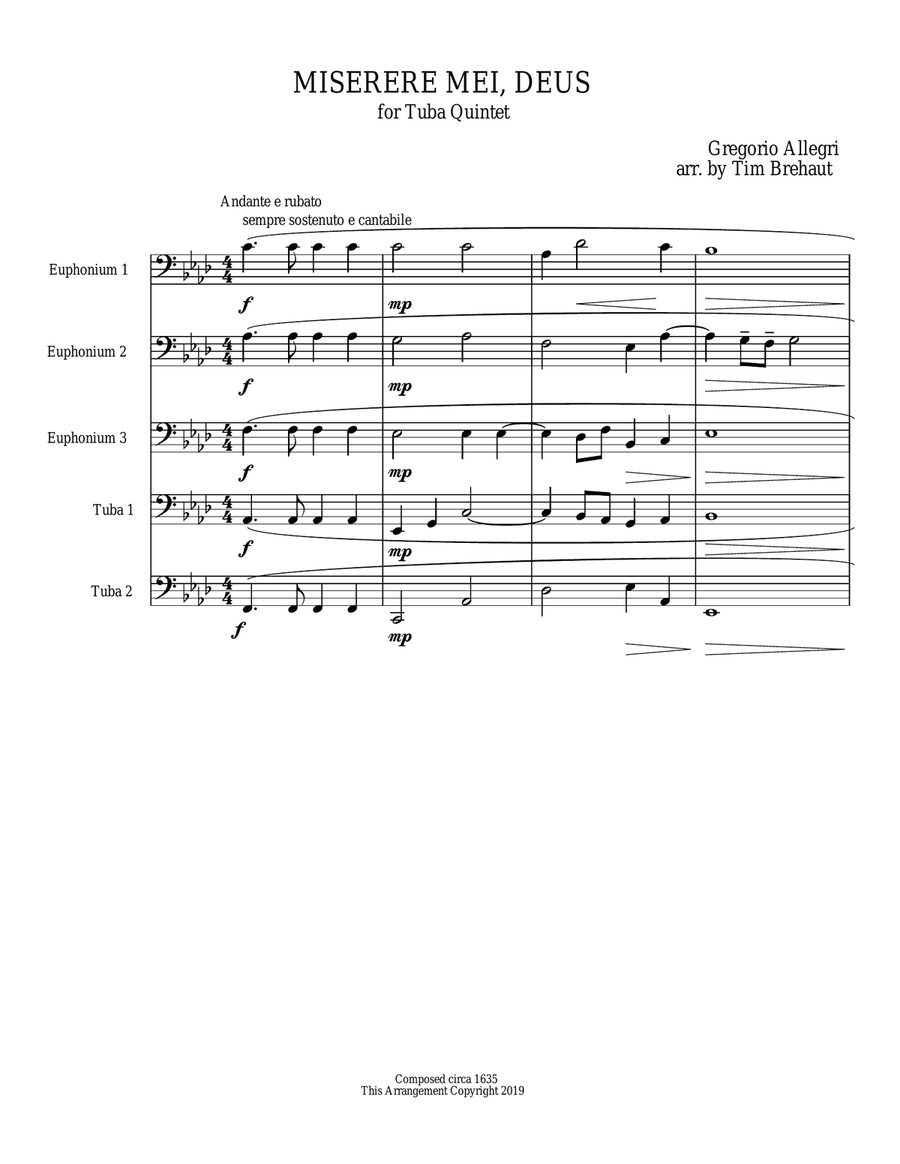

 Miserere Mei, Deus - Gregorio Allegri - Tuba Quintet
Miserere Mei, Deus - Gregorio Allegri - Tuba Quintet
$8.99 #Brass Quintet: 2 trumpets, horn, trombone, tuba #Gregorio Allegri #Tim Brehaut #Tim Brehaut


 Miserere Mei, Deus By Gregorio Allegri for Saxophone Quintet
Miserere Mei, Deus By Gregorio Allegri for Saxophone Quintet
$1.99 #Gregorio Allegri #Gregorio Allegri #Stephen Davies #Stephen Davies


 Gregorio Allegri: Miserere mei, Deus for Brass Dectet
Gregorio Allegri: Miserere mei, Deus for Brass Dectet
$8.00 #Choral SATB #Gregorio Allegri #Arkstar Brassmusic #ASANO Takashi
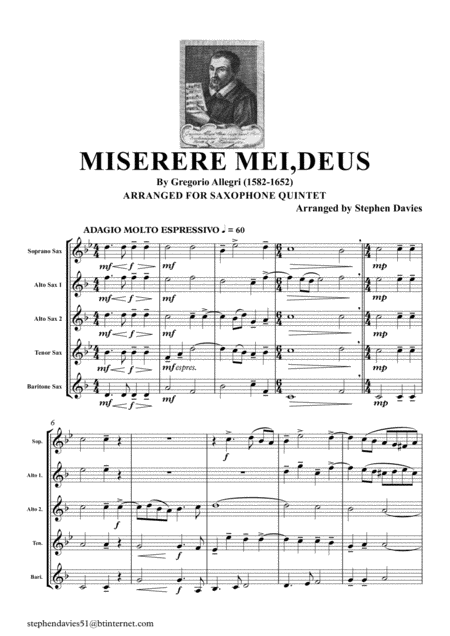

 Miserere Mei, Deus by Gregorio Allegri (1582-1652) for Saxophone Quintet.
Miserere Mei, Deus by Gregorio Allegri (1582-1652) for Saxophone Quintet.
$21.99 #Saxophone ensemble #Gregorio Allegri #Stephen Davies #Stephen Davies
More digital shop results ⇒
Miserere Mei Deus - Gregorio Allegri - Brass Quintet



$9.99 #Brass Quintet: 2 trumpets, horn, trombone, tuba #Gregorio Allegri #Tim Brehaut #Tim Brehaut
Miserere Mei Deus by Gregorio Allegri - BRASS QUINTET



$2.99 #Gregorio Allegri #Matt Smith #Matt Smith
Miserere Mei, Deus - Gregorio Allegri - Horn Quintet



$8.99 #Brass Quintet: 2 trumpets, horn, trombone, tuba #Gregorio Allegri #Tim Brehaut #Tim Brehaut
Miserere Mei, Deus - Gregorio Allegri - Tuba Quintet



$8.99 #Brass Quintet: 2 trumpets, horn, trombone, tuba #Gregorio Allegri #Tim Brehaut #Tim Brehaut
Miserere Mei, Deus By Gregorio Allegri for Saxophone Quintet



$1.99 #Gregorio Allegri #Gregorio Allegri #Stephen Davies #Stephen Davies
Gregorio Allegri: Miserere mei, Deus for Brass Dectet



$8.00 #Choral SATB #Gregorio Allegri #Arkstar Brassmusic #ASANO Takashi
Miserere Mei, Deus by Gregorio Allegri (1582-1652) for Saxophone Quintet.



$21.99 #Saxophone ensemble #Gregorio Allegri #Stephen Davies #Stephen Davies
More digital shop results ⇒
| |||||||||||||||||||||||||




















